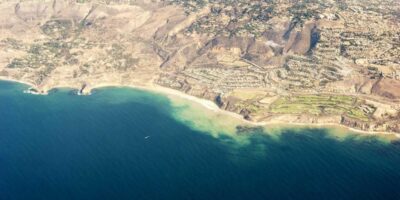Understanding Wrightsville Beach Tides
Wrightsville Beach, located in North Carolina, is known for its captivating shoreline and dynamic tidal patterns. The tides in this area play a crucial role in shaping the environment and affecting local activities. Whether you’re a visitor planning a beach day or a local resident, understanding the tides can enrich your coastal experience.
What Causes Tides?
Tides are the result of gravitational forces exerted by the moon and the sun on Earth’s oceans. These forces cause the water levels to rise and fall in a predictable pattern. The gravitational pull of the moon has the greatest impact, while the sun’s influence is slightly weaker but still significant. This combination creates what we know as high and low tides.
The Tidal Cycle
Wrightsville Beach experiences a semidiurnal tidal cycle, which means it has two high tides and two low tides each day. The average distance between high and low tide is called the tidal range. At Wrightsville Beach, the range can vary greatly depending on the lunar phase and other factors.
Lunar Phases and Tides
The moon’s phases have a direct impact on the tides. During a new moon and a full moon, the sun, moon, and Earth align. This alignment results in more extreme tides, known as spring tides. During the first and third quarters of the moon, the sun and moon are at right angles to each other. This angle results in neap tides, which have a smaller tidal range.
How to Read a Tide Chart
Reading a tide chart is crucial if you’re planning activities on or near the water. A tide chart indicates the predicted times and heights of high and low tides for a specific location. On a typical tide chart for Wrightsville Beach, each day is divided into time slots, usually in military time, showing high tide, low tide, and the expected height in feet.
- Time: Indicates when the tides will occur.
- Tide type: Marks whether it’s a high or low tide.
- Height: Measured in feet, this shows how high or low the tide will be compared to the average sea level.
Impact of Tides on Activities
The tides at Wrightsville Beach influence a variety of local activities. Many visitors and residents plan their schedules around these natural rhythms.
Surfing
Wrightsville Beach is a popular spot for surfers. The best conditions often occur around the transition between low and high tide. Incoming tides generally create better waves. However, different surf spots respond uniquely to tide levels. Surfers often consult tide charts to catch optimal wave conditions.
Fishing
Tides significantly affect fish behavior. During rising tides, fish move closer to shore in search of food. This makes the beginning of an incoming tide a prime time for surf fishing. At low tide, fishermen might target channels or inlets where fish congregate.
Beachcombing
Beachcombing is best done at low tide when more of the beach is exposed. Shells, driftwood, and other ocean treasures are more easily found during these times. Areas of the beach that are usually submerged can be explored, revealing fascinating marine life.
Environmental Considerations
Tides have an essential role in the local ecosystem. They regulate the natural processes that shape coastal habitats.
Sand Movement
The ebb and flow of tides contribute to the natural movement of sand along the coast. This movement shapes dunes and beaches, maintaining the unique landscape of Wrightsville Beach. It also affects the stability of the coastline, impacting erosion and deposition processes.
Sea Life
Intertidal zones, areas that are underwater at high tide and exposed at low tide, are vibrant ecosystems teeming with life. During low tide, tidal pools form, creating temporary habitats for species like crabs, sea stars, and small fish. These species have adapted to survive in changing water levels.
Safety and Tides
Awareness of tidal patterns is crucial for ensuring safety on the beach. Rapidly changing tides can pose risks, particularly for inexperienced visitors.
Rip Currents
Rip currents can form as water returns to the sea after a wave breaks on the shore. Understanding tides can help predict when and where these strong currents might occur. Swimmers should be cautious during strong tidal changes, especially during spring tides when water movement is more intense.
Beach Safety
During high tide, parts of the beach can become inundated, seemingly vanishing under water. Beachgoers should be mindful of their surroundings and avoid setting up too close to the water’s edge. Lifeguards and local safety advisories provide information regarding conditions related to tides.
Navigating Coastal Waters
Marine navigation in the waters around Wrightsville Beach requires attentive tide monitoring. Tides influence water depth, current speed, and direction, all of which are vital for boating safety.
Inlets and Channels
Inlets and channels can be challenging to navigate due to shifting sandbanks and tidal flows. Knowing the timing of high and low tides helps boaters avoid grounding and ensures safe passage through these dynamic areas.
Docking
When docking or mooring, tides affect the water level relative to dock height. Those responsible for securing boats must adjust lines based on tide predictions to prevent damage and maintain stability.
Learning More About Tides
For those interested in exploring tides further, resources are widely available. Local visitor centers, educational programs, and online tools offer valuable insights that deepen understanding of tidal phenomena.
Observing the tides at Wrightsville Beach offers a profound connection to the natural cycles governing our planet. Familiarizing yourself with these patterns enriches your experience, whether you’re catching waves, going for a sail, or simply enjoying the view.
“`
